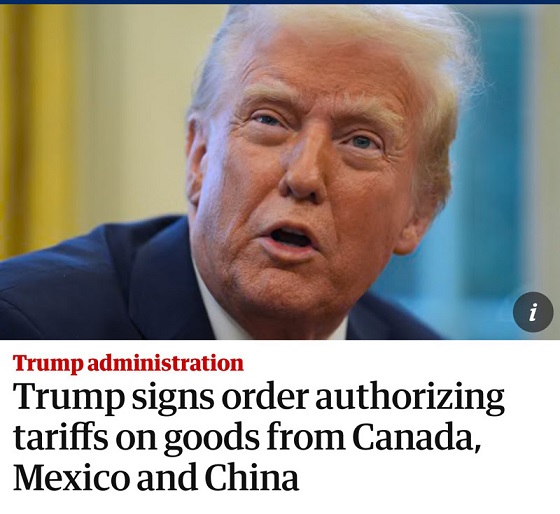Alberta
Province has three scenarios for return to school in September. Final decision by August 1. Details

From the Province of Alberta
Getting ready for 2020-21 school year
A comprehensive re-entry plan for the upcoming school year allows schools and parents to prepare for learning while putting student and staff safety first.
The plan offers guidance on a wide range of operational issues including hygiene and health requirements, student learning, transportation and diploma exams. It also addresses mental health and psychological supports for students and staff.
School authorities will plan for all three scenarios for September:
- In-school classes resume (near normal operations with health measures)
- In-school classes partially resume with additional health measures
- At home learning continues (in-school classes are cancelled)
The preferred and likely scenario is that students will return to daily in-school classes at the beginning of the year. The government will share its final decision by Aug. 1 on which scenario will be in place at the beginning of the school year. However, school authorities are asked to prepare for implementing any of the three possibilities during the upcoming school year, including on short notice.
“We are providing clear direction and the certainty parents and the school system need to plan ahead and get ready for what the new school year may look like. We are hoping, and it is likely, students can return to daily classes at school while taking health precautions, but we have to prepare for all possibilities. I want to thank our education leaders, teachers and parents for their thoughtful contributions to this comprehensive plan.”
“This plan puts the interests of students and staff first. Educators, administrators, families, health professionals and government all need to work together to support a safe return to in-person classes. We continue to monitor the situation closely. The reality is, we must weigh the risk of prolonged school closures against the risk of COVID-19 outbreaks in closed settings, such as schools. A safe and successful school year will only be possible if we all work together.”
The re-entry plan balances the need for provincial standardized approaches in some areas while also providing flexibility and recognition of school authorities’ autonomy to address health guidelines in the most effective ways in their own communities.
Alberta Education worked closely with many education partners on the plan, including the Alberta School Boards Association, the Alberta Teachers’ Association, the College of Alberta School Superintendents, the Association of Independent Schools and Colleges in Alberta, The Association of Alberta Public Charter Schools, individual school authorities and the Alberta School Councils’ Association which compiled input from more than 66,000 parents.
“The Alberta School Councils’ Association is pleased that considerations for the safety of students and staff remain priorities throughout this detailed plan, along with the recognition that school authorities are best suited to making operational decisions directly impacting their local school communities. We look forward to ongoing work and communications with the ministry, as this is key for successful implementation and return to school.”
“Alberta’s teachers are looking forward to supporting our students as we transition into the 2020-21 school year. As our recent survey indicates, teachers are concerned about the health and safety of themselves, their colleagues and their students. We expect to work with government to strengthen and improve the plans for re-entry to ensure that schools can provide healthy and safe environments for teachers and students.”
“Supporting the health and safety of students and staff continues to be a top priority for the ASBA and all school boards. We appreciate government providing clarity, while ensuring flexibility and autonomy, as each of Alberta’s public, Catholic and Francophone boards face challenges within the context of their local communities. As the situation evolves, we will continue to collaborate with government and our members to adjust the plan in preparation for the upcoming school year.”
“The College of Alberta School Superintendents joins the province in its commitment to protecting the health and well-being of all students and staff as we transition to the 2020-21 school year. We appreciate the collaborative manner in which the re-entry plan has developed and are pleased that school divisions have been provided with the flexibility and authority to implement procedures beyond the plan that they deem necessary to ensure the safety of their learning environments.”
“We are deeply appreciative of the ongoing consultation with all educational partners by the Minister of Education and the ministry as a whole in these trying circumstances. Teachers and systems have responded to the pandemic with remarkable energy and ingenuity. The proactive, engaging leadership of our government continues to be essential for education to fulfil its vital role in Alberta through this critical time.”
“Our association appreciates the government’s collaborative approach in developing this re-entry plan. We remain committed to supporting our schools so that their staff and students can experience a safe and positive learning environment in the coming academic year.”
Public health guidance for schools
Return to in-school class learning may vary across the province and is dependent on the number of COVID-19 cases in the local area. School boards should develop their own COVID-19 plans under the applicable scenario and health guidelines prior to reopening.
Measures to reduce the risk – scenario 1 (in-school classes resume – near normal operations with health measures)
Cleaning
- Enhanced cleaning and disinfecting, including daily cleaning for all areas of the school, washrooms and high-touch surfaces cleaned several times a day or more as needed.
- Regularly scheduled deep cleaning when students are not present.
Student/staff hygiene and illness
- Routine screening for all staff and students.
- Strict stay-at-home policy for any students or staff exhibiting symptoms of COVID-19.
- Hand hygiene expectations when entering and exiting the school and classrooms, before and after eating.
- Continual reminders of the importance of respiratory etiquette (e.g., cover coughs and sneezes, avoid touching the face and disposal of used tissues promptly, followed by hand hygiene).
- Students who develop symptoms at school may be asked to wear a mask and isolate in a separate room until a parent arrives for pickup. If a separate room is not available, the student must be kept at least two metres away from other individuals.
Physical distancing and grouping
- When possible, practise some physical distancing as a good precaution to prevent the spread of disease.
- In classrooms, buses and during activities when physical distancing may not be possible, extra emphasis is put on other hygiene practices.
- Reorganization of rooms to allow for more physical space.
- Cohorting of students by class where possible.
- Guiding foot traffic flow through entrances and hallways by using markers on the floor or pylons/barriers.
- Avoiding large gatherings such as assemblies.
Masks
- Staff and students will not be mandated to wear masks.
- Masks may be considered in circumstances where there is prolonged close contact (greater than 15 minutes) and distance of two metres cannot be maintained.
- Masking is generally not recommended for younger students.
Shared items
- A no-sharing policy – all students should have their own supplies.
- Where sharing of equipment is required, the equipment should be cleaned between uses.
Cases of COVID-19 in a school
- The zone medical officer of health will work with school authorities on the rapid identification of cases through easily accessible testing, rapid close contact identification, and isolation measures when needed.
- The zone medical officer of health will also work with school authorities to provide follow-up recommendations and messaging for staff, parents and students.
- Alberta Health Services may request the school to close in-person classes to allow the public health investigation to take place.
- Each school authority will support students and staff to learn or work at home if they are required to self-isolate.
Measures to reduce the risk – scenario 2 (in-school classes partially resume with additional health measures)
The same considerations as scenario 1, with the following differences:
- A recommended maximum of 15 people in a classroom to allow for more consistent physical distancing.
- Students will attend school less regularly as school authorities will need to adjust their class schedule and configuration to meet the physical distancing requirement.
Non-COVID-19 operational highlights
- Any summer programming will follow scenario 2 of the re-entry plan and the associated public health measures.
- August diploma exams will proceed for students taking diploma courses this summer.
- For the 2020-21 school year, diploma exams will be held if the first or second scenarios are in place. In scenario 3, exams may be cancelled.
- Provincial achievement tests (PATs) for Grades 6 and 9 can be held in the first and second scenarios, but will be optional for school authorities to participate.
- If scenario 3 is in place at the beginning of the school year, the January PATs will be cancelled. May/June PATs may be cancelled based on the duration of at-home learning.
- School authorities can, as deemed appropriate at the local level, reduce time spent teaching non-core subjects to allow for additional instruction time on core subjects.
- School authorities must enable the full participation and inclusion of students with disabilities under each scenario and address any learning gaps from the 2019-20 school year.
- Mental health supports should be in place for students and staff.
This plan is part Alberta’s Relaunch Strategy to safely begin removing public health restrictions and reopen our economy. For more information, visit alberta.ca/RelaunchStrategy.
2025 Federal Election
The High Cost Of Continued Western Canadian Alienation

From EnergyNow.Ca
By Jim Warren
Energy Issues Carney Must Commit to if He Truly Cares About National Cohesion and be Different From Trudeau
If the stars fail to align in the majority of Western Canada’s favour and voters from Central Canada and the Maritimes re-elect a Liberal government on April 28, it will stand as a tragic rejection of the aspirations of the oil producing provinces and a threat to national cohesion.
As of today Mark Carney has not clearly and unequivocally promised to tear down the Liberal policy wall blocking growth in oil and gas exports. Yes, he recently claimed to favour energy corridors, but just two weeks earlier he backtracked on a similar commitment.
There are some promises Carney hopefully won’t honour. He has pledged to impose punitive emissions taxes on Canadian industry. But that’s supposedly alright because Carney has liberally sprinkled that promise with pixie dust. This will magically ensure any associated increases in the cost of living will disappear. Liberal wizardry will similarly vaporize any harm Carbon Tax 2.0 might do to the competitive capacity of Canadian exporters.
Carney has as also promised to impose border taxes on imports from countries that lack the Liberals’ zeal for saving the planet. These are not supposed to raise Canadians’ cost of living by much, but if they do we can take pride in doing our part to save the planet. We can feel good about ourselves while shopping for groceries we can’t afford to buy.
There is ample bad news in what Carney has promised to do. No less disturbing is what he has not agreed to do. Oil and gas sector leaders have been telling Carney what needs to be done, but that doesn’t mean he’s been listening.
The Build Canada Now action plan announced last week by western energy industry leaders lays out a concise five-point plan for growing the oil and gas sector. If Mark Carney wants to convince his more skeptical detractors that he is truly concerned about Canadian prosperity, he should consider getting a tattoo that celebrates the five points.
Yet, if he got onside with the five points and could be trusted, would it not be a step in the right direction? Sure, but it would also be great if unicorns were real.
The purpose of the Build Canada Now action plan couldn’t be much more clearly and concisely stated. “For the oil and natural gas sector to expand and energy infrastructure to be built, Canada’s federal political leaders can create an environment that will:
1. Simplify regulation. The federal government’s Impact Assessment Act and West Coast tanker ban are impeding development and need to be overhauled and simplified. Regulatory processes need to be streamlined, and decisions need to withstand judicial challenges.
2. Commit to firm deadlines for project approvals. The federal government needs to reduce regulatory timelines so that major projects are approved within 6 months of application.
3. Grow production. The federal government’s unlegislated cap on emissions must be eliminated to allow the sector to reach its full potential.
4. Attract investment. The federal carbon levy on large emitters is not globally cost competitive and should be repealed to allow provincial governments to set more suitable carbon regulations.
5. Incent Indigenous co-investment opportunities. The federal government needs to provide Indigenous loan guarantees at scale so industry may create infrastructure ownership opportunities to increase prosperity for communities and to ensure that Indigenous communities benefit from development.”
As they say the devil is often in the details. But it would be an error to complicate the message with too much detail in the context of an election campaign. We want to avoid sacrificing the good on behalf of the perfect. The plan needs to be readily understandable to voters and the media. We live in the age of the ten second sound bite so the plan has to be something that can be communicated succinctly.
Nevertheless, there is much more to be done. If Carney hopes to feel welcome in large sections of the west he needs to back away from many of promises he’s already made. And there are many Liberal policies besides Bill C-69 and C-48 that need to be rescinded or significantly modified.
Liberal imposed limitations on free speech have to go. In a free society publicizing the improvements oil and gas companies are making on behalf of environmental protection should not be a crime.
There is a morass of emissions reduction regulations, mandates, targets and deadlines that need to be rethought and/or rescinded. These include measures like the emissions cap, the clean electricity standard, EV mandates and carbon taxes. Similarly, plans for imposing restrictions on industries besides oil and gas, such as agriculture, need to be dropped. These include mandatory reductions in the use of nitrogen fertilizer and attacks (thus far only rhetorical) on cattle ranching.
A good starting point for addressing these issues would be meaningful federal-provincial negotiations. But that won’t work if the Liberals allow Quebec to veto energy projects that are in the national interest. If Quebec insists on being obstructive, the producing provinces in the west will insist that its equalization welfare be reduced or cancelled.
Virtually all of the Liberal policy measures noted above are inflationary and reduce the profitability and competitive capacity of our exporters. Adding to Canada’s already high cost of living on behalf of overly zealous, unachievable emissions reduction goals is unnecessary as well as socially unacceptable.
We probably all have our own policy change preferences. One of my personal favourites would require the federal government to cease funding environmental organizations that disrupt energy projects with unlawful protests and file frivolous slap suits to block pipelines.
Admittedly, it is a rare thing to have all of one’s policy preferences satisfied in a democracy. And it is wise to stick to a short wish list during a federal election campaign. Putting some of the foregoing issues on the back burner is okay provided we don’t forget them there.
But what if few or any of the oil and gas producing provinces’ demands are accepted by Carney and he still manages to become prime minister?
We are currently confronted by a dangerous level of geopolitical uncertainty. The prospects of a global trade war and its effects on an export-reliant country like Canada are daunting to say the least.
Dividing the country further by once again stifling the legitimate aspirations of the majority of people in Alberta and Saskatchewan will not be helpful. (I could add voters from the northeast and interior of B.C., and southwestern Manitoba to the club of the seriously disgruntled.)
2025 Federal Election
Next federal government should recognize Alberta’s important role in the federation
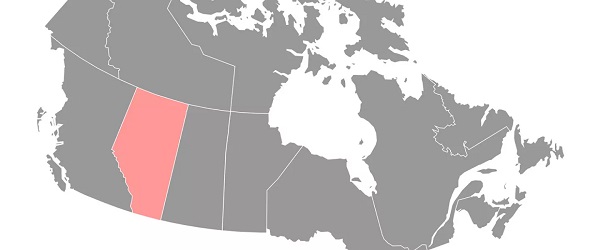
From the Fraser Institute
By Tegan Hill
With the tariff war continuing and the federal election underway, Canadians should understand what the last federal government seemingly did not—a strong Alberta makes for a stronger Canada.
And yet, current federal policies disproportionately and negatively impact the province. The list includes Bill C-69 (which imposes complex, uncertain and onerous review requirements on major energy projects), Bill C-48 (which bans large oil tankers off British Columbia’s northern coast and limits access to Asian markets), an arbitrary cap on oil and gas emissions, numerous other “net-zero” targets, and so on.
Meanwhile, Albertans contribute significantly more to federal revenues and national programs than they receive back in spending on transfers and programs including the Canada Pension Plan (CPP) because Alberta has relatively high rates of employment, higher average incomes and a younger population.
For instance, since 1976 Alberta’s employment rate (the number of employed people as a share of the population 15 years of age and over) has averaged 67.4 per cent compared to 59.7 per cent in the rest of Canada, and annual market income (including employment and investment income) has exceeded that in the other provinces by $10,918 (on average).
As a result, Alberta’s total net contribution to federal finances (total federal taxes and payments paid by Albertans minus federal money spent or transferred to Albertans) was $244.6 billion from 2007 to 2022—more than five times as much as the net contribution from British Columbians or Ontarians. That’s a massive outsized contribution given Alberta’s population, which is smaller than B.C. and much smaller than Ontario.
Albertans’ net contribution to the CPP is particularly significant. From 1981 to 2022, Alberta workers contributed 14.4 per cent (on average) of total CPP payments paid to retirees in Canada while retirees in the province received only 10.0 per cent of the payments. Albertans made a cumulative net contribution to the CPP (the difference between total CPP contributions made by Albertans and CPP benefits paid to retirees in Alberta) of $53.6 billion over the period—approximately six times greater than the net contribution of B.C., the only other net contributing province to the CPP. Indeed, only two of the nine provinces that participate in the CPP contribute more in payroll taxes to the program than their residents receive back in benefits.
So what would happen if Alberta withdrew from the CPP?
For starters, the basic CPP contribution rate of 9.9 per cent (typically deducted from our paycheques) for Canadians outside Alberta (excluding Quebec) would have to increase for the program to remain sustainable. For a new standalone plan in Alberta, the rate would likely be lower, with estimates ranging from 5.85 per cent to 8.2 per cent. In other words, based on these estimates, if Alberta withdrew from the CPP, Alberta workers could receive the same retirement benefits but at a lower cost (i.e. lower payroll tax) than other Canadians while the payroll tax would have to increase for the rest of the country while the benefits remained the same.
Finally, despite any claims to the contrary, according to Statistics Canada, Alberta’s demographic advantage, which fuels its outsized contribution to the CPP, will only widen in the years ahead. Alberta will likely maintain relatively high employment rates and continue to welcome workers from across Canada and around the world. And considering Alberta recorded the highest average inflation-adjusted economic growth in Canada since 1981, with Albertans’ inflation-adjusted market income exceeding the average of the other provinces every year since 1971, Albertans will likely continue to pay an outsized portion for the CPP. Of course, the idea for Alberta to withdraw from the CPP and create its own provincial plan isn’t new. In 2001, several notable public figures, including Stephen Harper, wrote the famous Alberta “firewall” letter suggesting the province should take control of its future after being marginalized by the federal government.
The next federal government—whoever that may be—should understand Alberta’s crucial role in the federation. For a stronger Canada, especially during uncertain times, Ottawa should support a strong Alberta including its energy industry.
-

 2025 Federal Election2 days ago
2025 Federal Election2 days agoPoilievre on 2025 Election Interference – Carney sill hasn’t fired Liberal MP in Chinese election interference scandal
-

 2025 Federal Election1 day ago
2025 Federal Election1 day agoJoe Tay Says He Contacted RCMP for Protection, Demands Carney Fire MP Over “Bounty” Remark
-
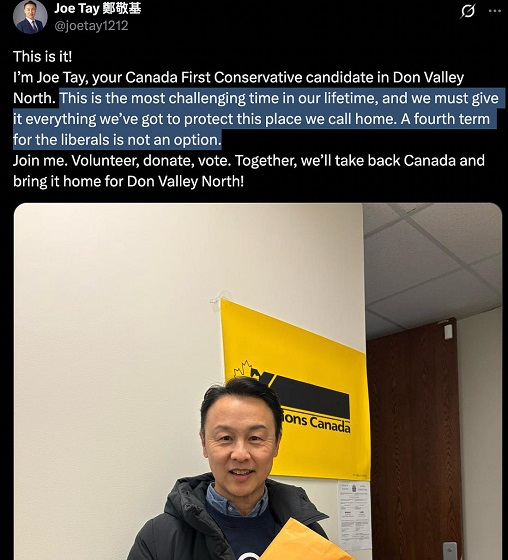
 2025 Federal Election1 day ago
2025 Federal Election1 day agoHong Kong-Canadian Groups Demand PM Carney Drop Liberal Candidate Over “Bounty” Remark Supporting CCP Repression
-

 Censorship Industrial Complex2 days ago
Censorship Industrial Complex2 days agoWelcome to Britain, Where Critical WhatsApp Messages Are a Police Matter
-
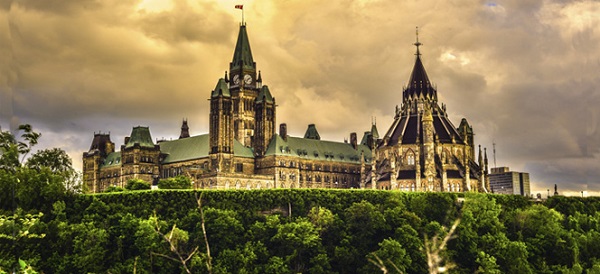
 2025 Federal Election1 day ago
2025 Federal Election1 day agoAlcohol tax and MP pay hike tomorrow (April 1)
-

 2025 Federal Election1 day ago
2025 Federal Election1 day agoPoilievre To Create ‘Canada First’ National Energy Corridor
-

 2025 Federal Election1 day ago
2025 Federal Election1 day agoChinese Election Interference – NDP reaction to bounty on Conservative candidate
-
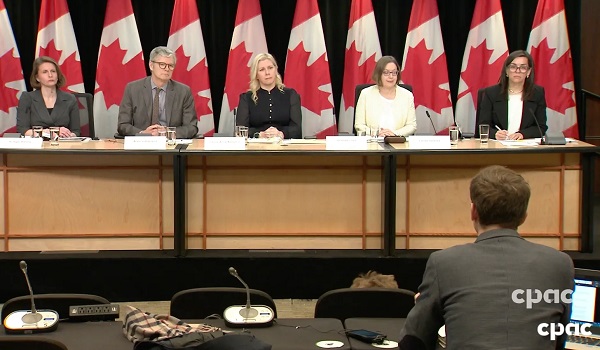
 2025 Federal Election1 day ago
2025 Federal Election1 day agoChina Election Interference – Parties Received Security Briefing Days Ago as SITE Monitors Threats to Conservative Candidate Joe Tay




